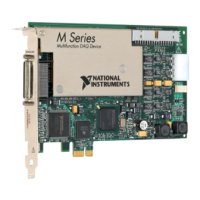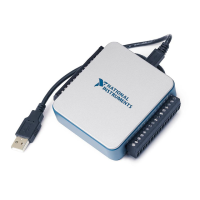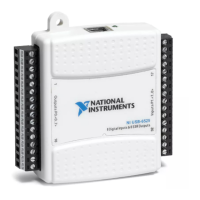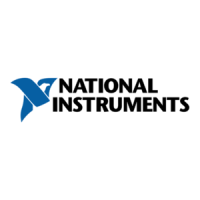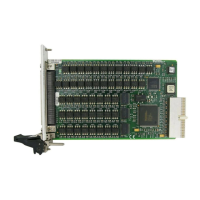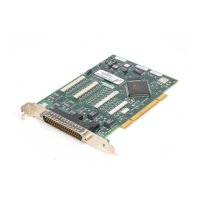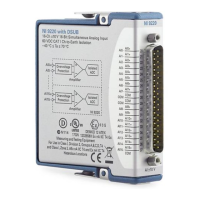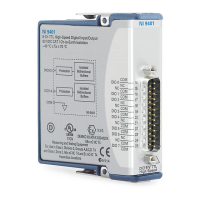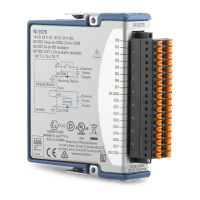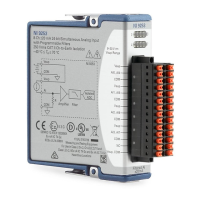© National Instruments | 3-5
M Series User Manual
+5 V Power Source
The +5 V terminals on the I/O connector supply +5 V referenced to D GND. Use these terminals
to power external circuitry.
Newer revision M Series devices have a traditional fuse to protect the supply from overcurrent
conditions. This fuse is not customer-replaceable; if the fuse permanently opens, return the
device to NI for repair.
Older revision M Series devices have a self-resetting fuse to protect the supply from overcurrent
conditions. This fuse resets automatically within a few seconds after the overcurrent condition
is removed. For more information about the self-resetting fuse and precautions to take to avoid
improper connection of +5 V and ground terminals, refer to the KnowledgeBase document,
Self-Resetting Fuse Additional Information, by going to
ni.com/info and entering the Info
Code
pptc.
(USB-6281/6289 Devices) All USB-628x devices have a user-replaceable socketed fuse to
protect the supply from overcurrent conditions. When an overcurrent condition occurs, check
your cabling to the +5 V terminals and replace the fuse as described in the USB Device Fuse
Replacement section of Chapter 1, Getting Started.
Caution Never connect the +5 V power terminals to analog or digital ground or to
any other voltage source on the M Series device or any other device. Doing so can
damage the device and the computer. NI is not liable for damage resulting from such
a connection.
The power rating on most devices is +4.75 to +5.25 VDC at 1 A.
Refer to the specifications document for your device to obtain the device power rating.
Note (NI PCIe-6251/6259 Devices) M Series PCI Express devices supply less
than 1 A of +5 V power unless you use the disk drive power connector. Refer to the
Getting Started with M Series PCI Express Devices and the Disk Drive Power
Connector section of Chapter 1, Getting Started, for more information.
Note The NI 6221 (37-pin) device does not have a +5 V terminal.
USER 1 and USER 2
(NI USB-622x/625x BNC Devices) The USER connectors allow you to use a BNC connector
for a digital or timing I/O signal of your choice. The USER 1 and USER 2 BNC connectors are
routed (internal to the USB BNC device) to the USER 1 and USER 2 screw terminals, as shown
in Figure 3-1.
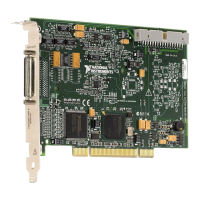
